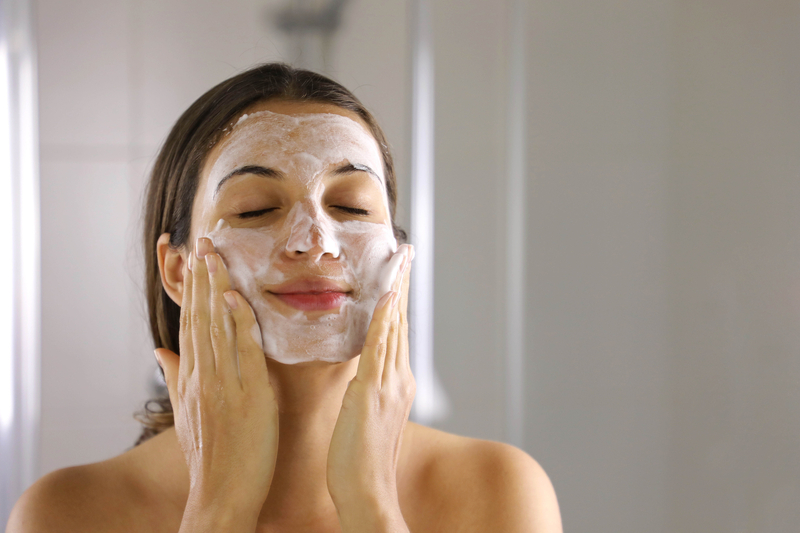The Science of Exfoliation: Physical vs Chemical, Which Is Best for You?
Exfoliation is a cornerstone of a healthy skincare routine, effectively removing dead skin cells, unclogging pores, and unveiling a brighter, smoother complexion. While many are familiar with the basic concepts of physical and chemical exfoliation, there is a wealth of scientific knowledge behind these methods that most people may not be aware of. In this comprehensive guide, we will explore the science behind exfoliation, delve into the mechanisms of physical and chemical exfoliation, and reveal lesser-known insights to help you make an informed decision about the most effective exfoliation method for your skin.
Understanding Exfoliation:
Exfoliation is the process of sloughing off dead skin cells from the surface of the skin. It promotes cellular turnover, stimulating the growth of new, healthy cells and revealing a fresh, radiant complexion. Two primary methods of exfoliation are physical and chemical exfoliation, each offering unique benefits and mechanisms.
Physical Exfoliation:
Physical exfoliation involves using granular substances or tools to manually remove dead skin cells. Common physical exfoliants include facial scrubs, brushes, loofahs, and cleansing grains. These exfoliants work by physically buffing away the surface layer of the skin, helping to eliminate debris, excess oil, and impurities. The rubbing or scrubbing action stimulates blood circulation and can provide a temporary feeling of increased smoothness and freshness.
While physical exfoliation is a well-known method, it is important to note that the choice of exfoliating particles and the intensity of scrubbing can significantly impact the outcome. Using gentle, rounded particles and applying light pressure minimizes the risk of skin irritation, micro-tears, or over-exfoliation, which can compromise the skin barrier function.
Chemical Exfoliation:
Chemical exfoliation involves the use of specific ingredients, such as alpha-hydroxy acids (AHAs) or beta-hydroxy acids (BHAs), to dissolve the bonds between dead skin cells and facilitate their removal. AHAs, such as glycolic acid and lactic acid, work on the skin’s surface and are effective for brightening, smoothing, and improving uneven skin tone. BHAs, like salicylic acid, penetrate deeper into the pores, making them excellent for treating acne, congestion, and oily skin.
The science behind chemical exfoliation lies in the ability of these acids to break down the protein structures that hold dead skin cells together. AHAs work by loosening the connections between these cells, promoting their shedding and enhancing the skin’s natural exfoliation process. BHAs, with their oil-soluble properties, penetrate into the pores, dissolving sebum and other impurities that can contribute to acne breakouts.
Choosing the Right Exfoliation Method for You:
- Skin Type: Understanding your skin type is crucial in determining the most suitable exfoliation method. Physical exfoliation may be suitable for normal to dry skin, as it can provide immediate tactile gratification. Chemical exfoliation, on the other hand, can be beneficial for oily, acne-prone, or sensitive skin types.
- Sensitivity: If you have sensitive skin, it’s essential to exercise caution and choose milder chemical exfoliants or physical exfoliation methods. Look for AHAs like lactic acid or PHAs (polyhydroxy acids) that offer gentle exfoliation without causing undue irritation.
- Specific Concerns: Consider your skincare goals and concerns when choosing an exfoliation method. Physical exfoliation can provide immediate smoothness and a refreshed feeling, while chemical exfoliation offers deeper pore cleansing and more significant long-term benefits, such as reducing hyperpigmentation or addressing acne-related issues.
- Frequency: The frequency of exfoliation depends on both the method and your skin’s tolerance. Physical exfoliation can be done 1-3 times a week, while chemical exfoliation may require less frequent application due to its potent nature. Start with a lower frequency and gradually increase as your skin adapts and tolerates the exfoliation.
Scientific Insights and Lesser-Known Facts:
- pH Balance: The pH level of exfoliating products plays a crucial role in their effectiveness. AHAs work best in the pH range of 3 to 4, while BHAs are most effective in a pH range of 3 to 4.5. Choosing products with the appropriate pH ensures optimal exfoliation results.
- Enzymatic Exfoliation: Apart from physical and chemical exfoliation, enzymatic exfoliation is another option to consider. Enzymes, such as papain from papaya or bromelain from pineapple, gently break down dead skin cells without mechanical or chemical abrasion.
- Combination Approach: Some individuals may benefit from a combination of physical and chemical exfoliation. Using a gentle physical exfoliant to remove superficial debris and then following up with a chemical exfoliant can provide comprehensive results.
- Patch Testing: Before incorporating any new exfoliating product into your routine, it’s essential to perform a patch test to ensure compatibility and minimize the risk of adverse reactions.
Exfoliation is a vital step in achieving a healthy, radiant complexion. Understanding the science behind physical and chemical exfoliation methods can help you make an informed decision about the best approach for your skin type and concerns. Consider factors such as skin type, sensitivity, specific concerns, and exfoliation frequency when selecting the most suitable method. Embrace the lesser-known scientific insights to optimize your exfoliation routine and enjoy the transformative effects of a smoother, more luminous complexion. As always, consult with a skincare professional for personalized advice and recommendations based on your unique skin needs.



